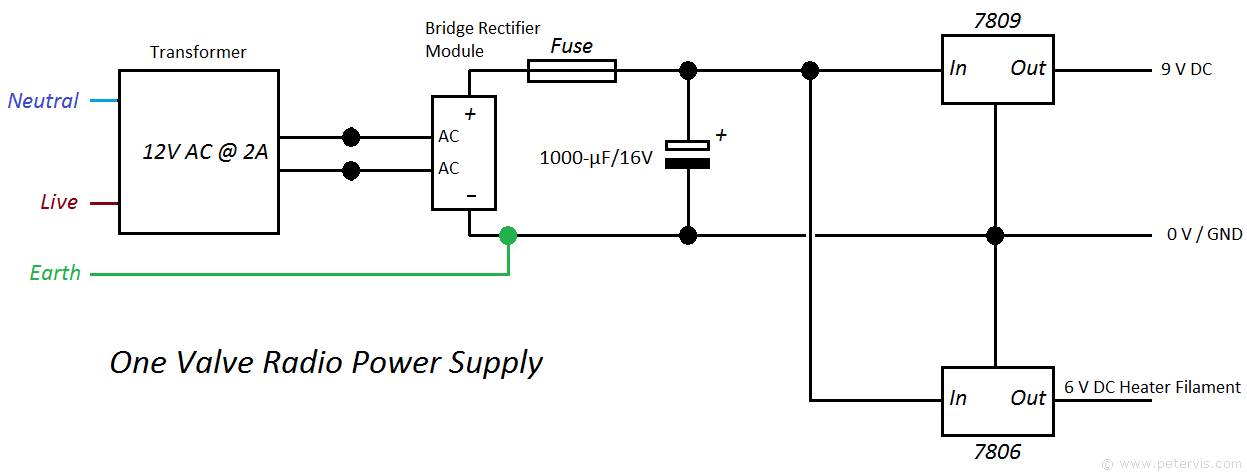One Valve Radio Power Supply

The power supply build does not use the screw cup system, as I needed it to be compact, otherwise, it would have occupied the complete board! This build uses a small mains transformer capable of supplying 12 V AC (2-amperes) of power to the circuit. This particular one is an isolated one, where the mains wires go directly into the transformer. It also has thermal shutdown capability for safety. If you already have a conventional mains adapter (wall-wart) capable of supplying +12 V DC, then you can ignore the transformer and bridge rectifier section but keep the rest of the circuitry such as the voltage regulators and smoothing capacitor. You should also consider connecting an external earth wire to the radio, as wall-warts usually do not employ or supply the earth connection.
To keep the construction simple, cheap, and more effective, I am employing voltage regulators. The advantage of using these is that it then gives the constructor the freedom to try out power supplies with other voltages, within reason though.
The 6j1p requires 6.3 V for the heater, and there are many ways to achieve this voltage. I decided to use a 6 V voltage regulator (7806), which is cheaply available (3 for a pound), and provides safety to the component in more ways than a simple resistive potential divider would. I am sure there will be hobbyists out there who are new to valve technology and not aware how sensitive the filament is. Hence, with a voltage regulator, they can try other voltages for the radio with a peace of mind that the filament will be safe. I also quite like the idea of using a modern integrated circuit to protect an ancient antiquated piece of technology.
The bridge rectifier is a simple and small module where you feed the AC to the centre two pins and the DC emerges from the outer two pins. I use this because it is compact and does not take much space compared to using four diodes. For the voltage smoothing capacitor, any value greater than 1000 µF will perform fine. The smoother the power is, the better it is for the valve circuits. Notice that I have connected the Earth wire to the negative rail. This will provide the radio tank circuit much more stability.
This Article Continues...
One Valve Radio6j1p
One Valve Radio Circuit
One Valve Radio Construction
One Valve Radio Regeneration Coil
One Valve Radio Power Supply
Ferrite Rod Antenna Coil
